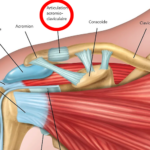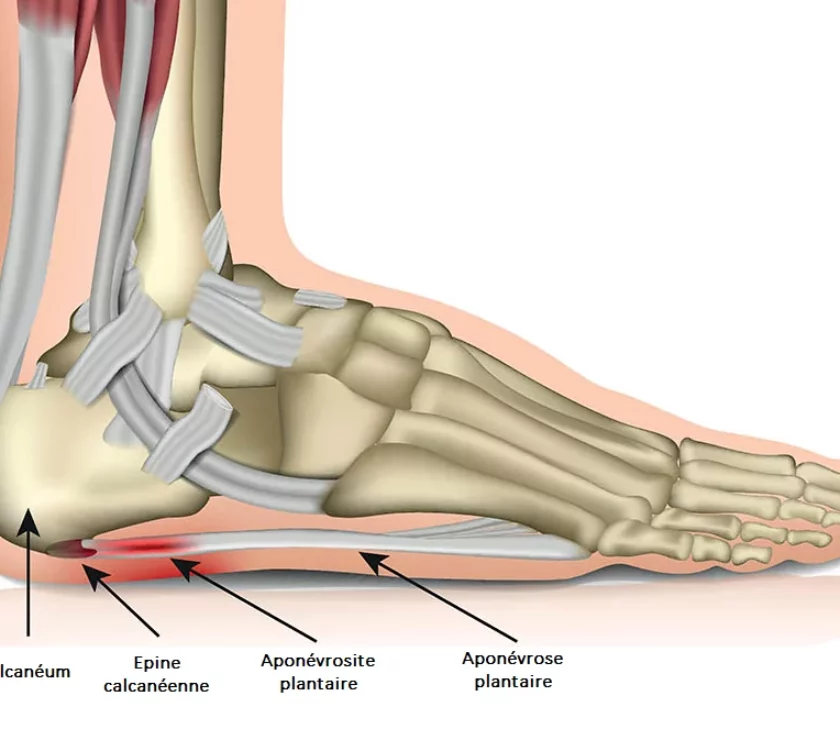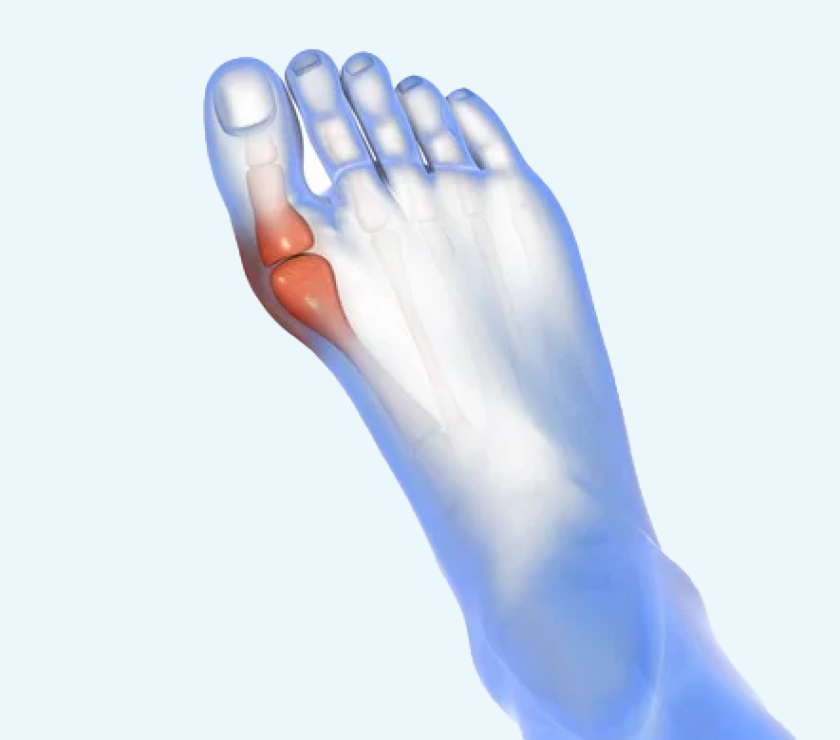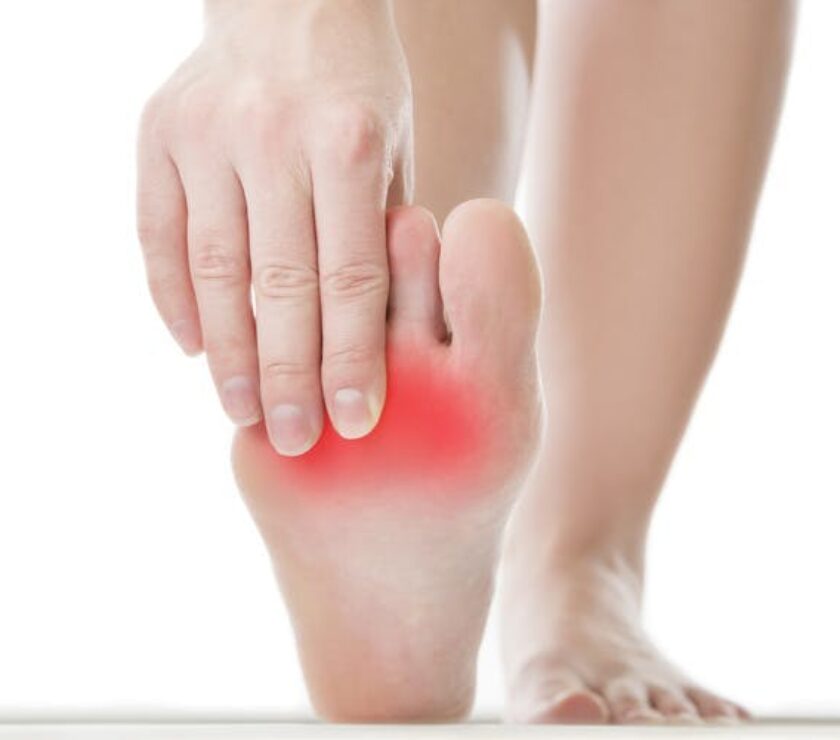ANKLE ARTHRODESIS
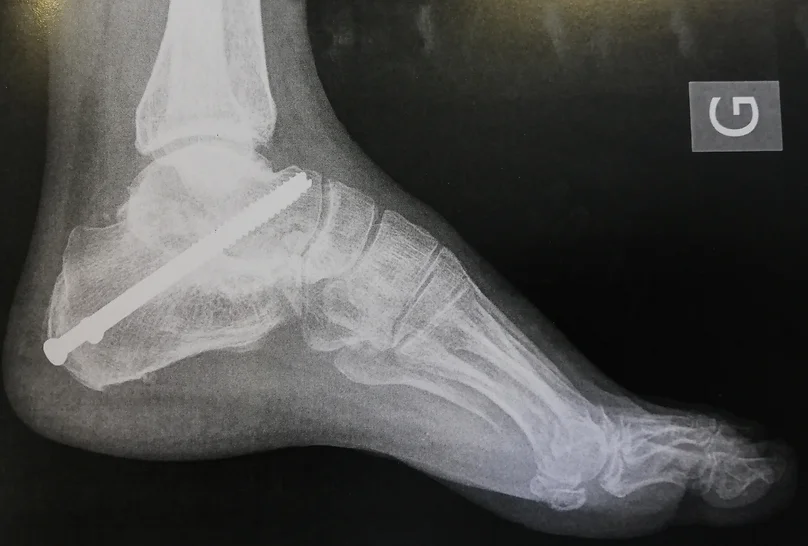
WHAT IS IT?
Ankle arthrodesis is a surgical procedure that aims to fuse the joint surfaces of the ankle (tibia and talus).
The most common causes of joint damage are osteoarthritis, less commonly rheumatoid arthritis, a previous fracture, or ligament rupture.
The natural progression in the absence of treatment is the persistence or worsening of pain. When medical treatment is no longer effective, arthrodesis surgery is an option.
BEFORE TREATMENT:
A comprehensive radiographic assessment is performed to confirm the diagnosis and plan the surgery.
WHAT TREATMENT ?
The surgery is performed under general or regional anesthesia. A scar is made on the anterior or lateral aspect of the ankle, with the size adapted to each case. The joint surfaces are cut (tibia and talus) and then fixed using various methods (plate, screws, staples, nail, etc.). At the end of the procedure, a drain is left in place to evacuate any hematoma. The drain will be removed as per the prescription (usually within one or more days). An immobilization boot is worn for six to twelve weeks.
AFTERWARDS ?
Getting up is allowed the day after the surgery, but weight-bearing is prohibited for a period of six weeks. Rehabilitation begins after the immobilization period is lifted. To prevent blood clots, anticoagulant treatment is prescribed for several weeks.
After a few days of hospitalization, your surgeon will authorize your discharge with the necessary care prescriptions (dressings, painkillers, anticoagulants). You will have a follow-up consultation with X-rays.
Walking is resumed after six weeks, supported by crutches, with or without a walking boot. The resumption of driving and professional activities will depend on your recovery.
Phlebitis can occur despite anticoagulant treatment. This is a clot that forms in the veins of the legs and can migrate, leading to a pulmonary embolism.
Like any surgery, there is a risk of hematoma, which usually resolves on its own. In exceptional cases, it may require needle aspiration or surgical drainage.
Wound healing, sometimes difficult to achieve, may require prolonged care. Bone consolidation is achieved within three months. The absence of bone fusion after six months is a sign of failed bone consolidation (nonunion) and may require reoperation based on the experienced pain.
Complex regional pain syndrome (CRPS) is a painful and inflammatory phenomenon that is still poorly understood. It is treated medically and can last for several months (sometimes even years), requiring specific management with adapted rehabilitation, additional assessments, and sometimes specific pain management. It is unpredictable in its onset and course, as well as its potential sequelae.
Infection is a rare but serious complication. It can occur long after surgery and may result from an infection elsewhere in the body, such as a dental or urinary infection. Infection can lead to further surgery. It is strongly advised not to smoke during the healing period, as smoking significantly increases the risk of infection.
Walking comfort depends on the positioning of the ankle arthrodesis. This may require orthopedic insoles, appropriate footwear, or even a reoperation for repositioning.
Blocking one joint will lead to overuse of the other joints in the foot, which may deteriorate in the long term and require surgical intervention themselves
The list is not exhaustive, and an exceptionally rare complication may occur, related to the local condition or technical variability. Not all complications can be specified, which you have understood and accepted.
EXPECTED RESULTS :
Recovery and smooth walking require a period of 12 to 18 months. The expected result is pain-free slow walking (strolling). Professional activities are usually resumed after 6 to 12 months (varies greatly depending on the profession and individual cases). Due to ankle fusion, an adaptation of the workplace may be necessary. Physical activities are allowed after several months, depending on the patient’s physical condition and should be approved by your surgeon.
In accordance with your surgeon and considering the risk-benefit balance, ankle arthrodesis has been proposed to you. The surgeon has explained other alternatives to you. It goes without saying that your surgeon may, if necessary and based on intraoperative findings or encountered difficulties, choose another technique deemed more suitable for your specific case.



